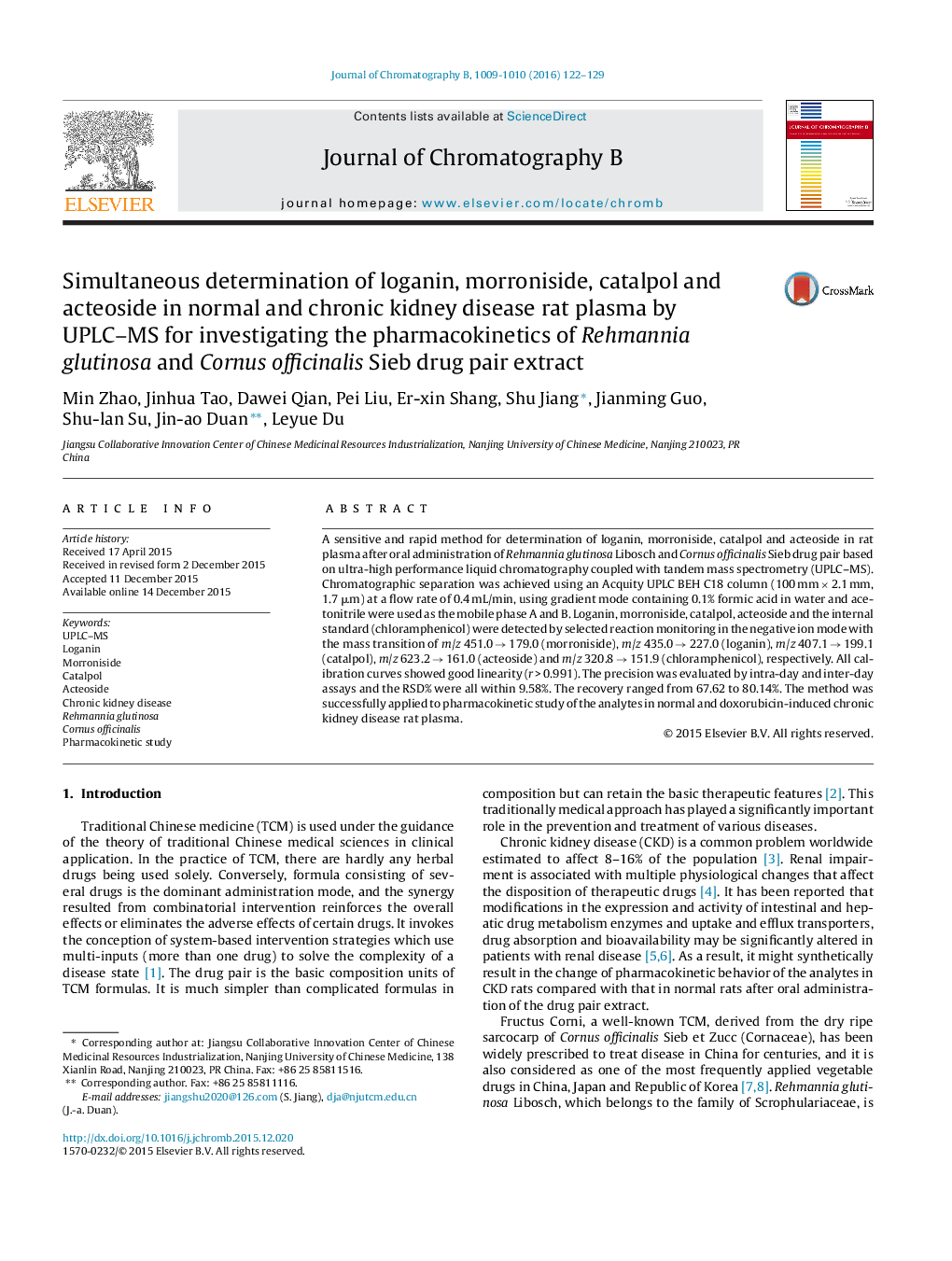| Article ID | Journal | Published Year | Pages | File Type |
|---|---|---|---|---|
| 1214743 | Journal of Chromatography B | 2016 | 8 Pages |
•Doxorubicin was used to induce the chronic kidney disease rats.•Pharmacokinetics of four constituents in Rehmannia glutinosa Libosch and Cornus officinalis Sieb drug pair were determined.•The AUC0–t, AUC0–∞, Cmax and CL/F were significantly different.•Factors might result in the differences were proposed.
A sensitive and rapid method for determination of loganin, morroniside, catalpol and acteoside in rat plasma after oral administration of Rehmannia glutinosa Libosch and Cornus officinalis Sieb drug pair based on ultra-high performance liquid chromatography coupled with tandem mass spectrometry (UPLC–MS). Chromatographic separation was achieved using an Acquity UPLC BEH C18 column (100 mm × 2.1 mm, 1.7 μm) at a flow rate of 0.4 mL/min, using gradient mode containing 0.1% formic acid in water and acetonitrile were used as the mobile phase A and B. Loganin, morroniside, catalpol, acteoside and the internal standard (chloramphenicol) were detected by selected reaction monitoring in the negative ion mode with the mass transition of m/z 451.0 → 179.0 (morroniside), m/z 435.0 → 227.0 (loganin), m/z 407.1 → 199.1 (catalpol), m/z 623.2 → 161.0 (acteoside) and m/z 320.8 → 151.9 (chloramphenicol), respectively. All calibration curves showed good linearity (r > 0.991). The precision was evaluated by intra-day and inter-day assays and the RSD% were all within 9.58%. The recovery ranged from 67.62 to 80.14%. The method was successfully applied to pharmacokinetic study of the analytes in normal and doxorubicin-induced chronic kidney disease rat plasma.
